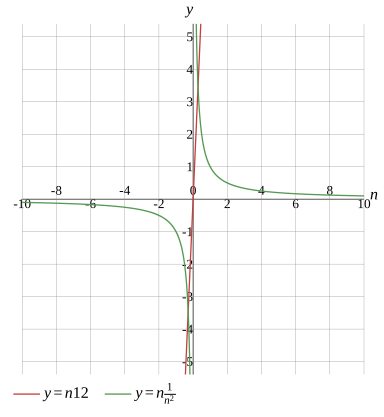Question
Solve the equation
n1=−63,n2=63
Alternative Form
n1≈−0.288675,n2≈0.288675
Evaluate
n×12=n×n21
Find the domain
More Steps


Evaluate
n2=0
The only way a power can not be 0 is when the base not equals 0
n=0
n×12=n×n21,n=0
Use the commutative property to reorder the terms
12n=n×n21
Multiply the terms
More Steps


Multiply the terms
n×n21
Cancel out the common factor n
1×n1
Multiply the terms
n1
12n=n1
Cross multiply
12n×n=1
Simplify the equation
12n2=1
Divide both sides
1212n2=121
Divide the numbers
n2=121
Take the root of both sides of the equation and remember to use both positive and negative roots
n=±121
Simplify the expression
More Steps


Evaluate
121
To take a root of a fraction,take the root of the numerator and denominator separately
121
Simplify the radical expression
121
Simplify the radical expression
More Steps


Evaluate
12
Write the expression as a product where the root of one of the factors can be evaluated
4×3
Write the number in exponential form with the base of 2
22×3
The root of a product is equal to the product of the roots of each factor
22×3
Reduce the index of the radical and exponent with 2
23
231
Multiply by the Conjugate
23×33
Multiply the numbers
More Steps


Evaluate
23×3
When a square root of an expression is multiplied by itself,the result is that expression
2×3
Multiply the terms
6
63
n=±63
Separate the equation into 2 possible cases
n=63n=−63
Check if the solution is in the defined range
n=63n=−63,n=0
Find the intersection of the solution and the defined range
n=63n=−63
Solution
n1=−63,n2=63
Alternative Form
n1≈−0.288675,n2≈0.288675
Show Solution

Graph
